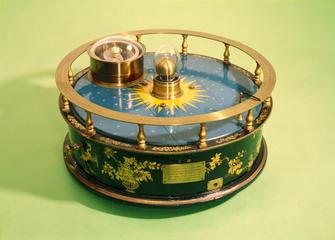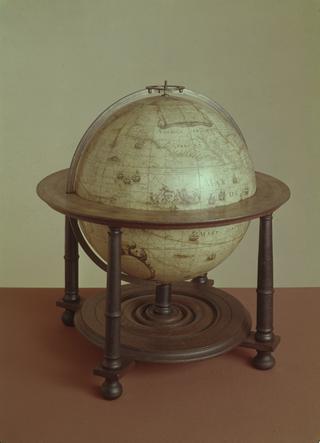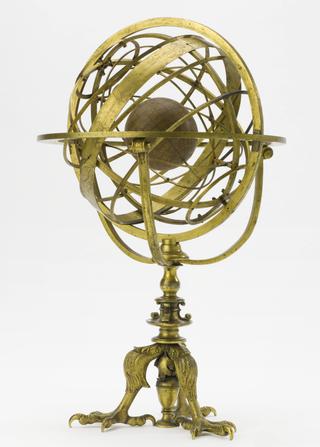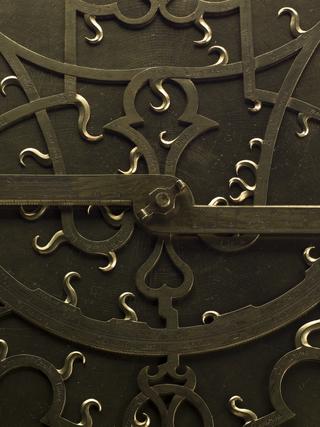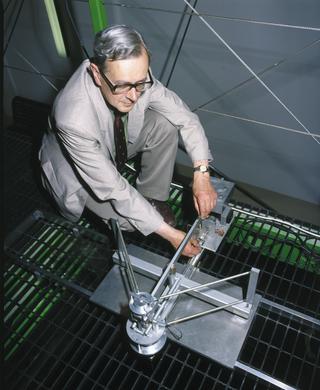
European astrolabe, 1425-1435
- Made:
- 1425-1435 in Newcastle upon Tyne and Andalusia
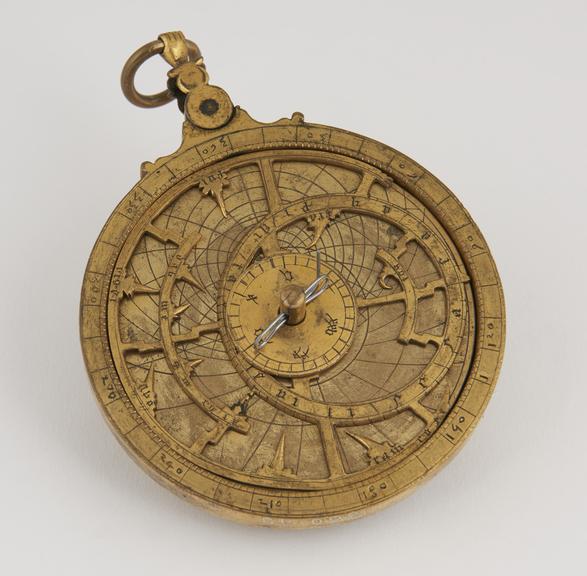
Small Hispano-Moorish planispheric astrolabe in brass gilt with four plates for the latitudes of 36, 39, 42 and 49 degrees and shadow dial and unequal scale on the reverse with vovelle, c. 1430, IC 247 [international checklist].
Dated to the early fifteenth century, this unsigned brass astrolabe is thought to originate from Moorish Spain in the region of Andalusia. This front view shows the moveable fretwork plate called the rete that denotes star positions by short straight pointers. The astrolabe is in essence a model of the universe that an astronomer could hold in their hands. Popular in Medieval and Renaissance Europe, its many uses included timekeeping, astrology and surveying. The astrolabe is a two-dimensional depiction of the heavens whose layout is achieved using the mathematical technique of stereographic projection. From its origins in the Ancient World, Islamic astronomers developed the astrolabe from where it spread to Europe.
Details
- Category:
- Astronomy
- Object Number:
- 1880-49
- Materials:
- brass and incomplete
- Measurements:
-
overall: 140 x 40 x 92 mm
- type:
- astrolabe
- credit:
- Fulgence, Mons. (Paris)
